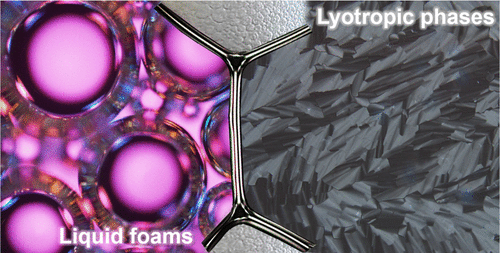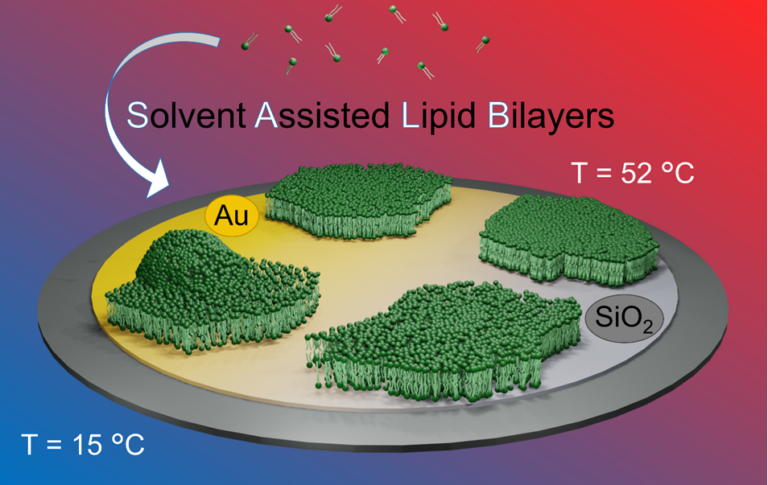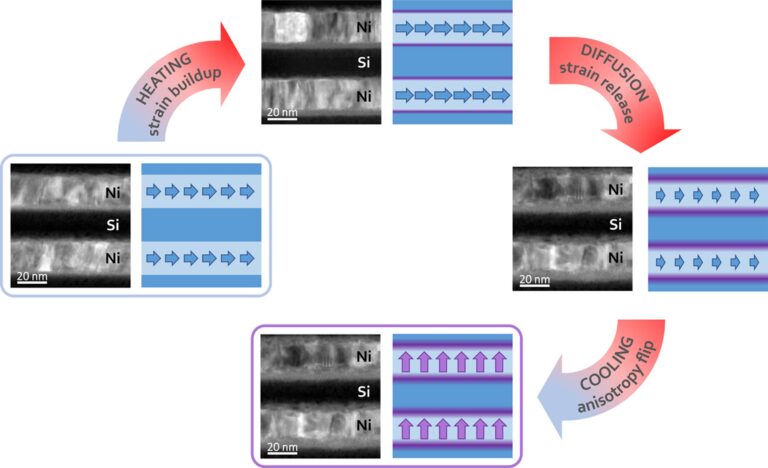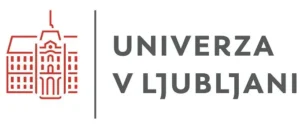News

Article in Nature Communications
Our coworker Anna Razumnaya, in collaboration with the Helmholtz-Zentrum Berlin für Materialien und Energie (Germany), the University of Picardie Jules Verne (France), and the CEMES-CNRS and Université de Toulouse (France), reported Switchable Topological Polar States in Epitaxial
BaTiO3 Nanoislands on Silicon in Nature Communications.
This study presents the creation of epitaxial BaTiO3 nanoislands on silicon, featuring chiral topological polar textures. These structures demonstrate unique center-type polarization domains that can be reversibly switched under an electric field. Insights into their 3D polarization patterns were achieved through piezoresponse force microscopy and phase-field modeling. The findings highlight a promising approach for integrating functional ferroelectric nanostructures into silicon-based platforms for next-generation nanoelectronic devices.

Article in Langmuir
We investigated two ionic liquid crystals by means of optical microscopy, X-ray, and fast field-cycling NMR relaxometry. The LC solutions were found to form foams, which produce some beautiful images.
These inspired the cover image of the journal issue. Link to the Article: https://pubs.acs.org/doi/full/10.1021/acs.langmuir.4c02059

Article in Sensors
Colleagues from Condensed Matter Physics Department, Marta Lavrič, George Cordoyiannis in Nikola Novak, in collaboration with groups from University of Ljubljana (L. Bar, A. Iglič) and Université Libre de Bruxelles Bruslju (M. E. Villanueva, P. Losada-Pérez), have published an article in the journal Sensors, entitled “Quality assessment of solvent-assisted lipid bilayers in different phases and aqueous buffer media: A QCM-D study” (https://doi.org/10.3390/s24186093). By means of quartz microbalance with dissipation monitoring (QCM-D), they have measured the adsorbed lipid mass in real-time, through changes in frequency and dissipation. They have demonstrated how different experimental parameters (aqueous buffers, and adsorption at temperatures corresponding to the fluid or gel phases) affect the quality of supported lipid bilayers, formed by the solvent-exchange method on Au and SiO2 surfaces. This time-efficient method for forming supported lipid bilayers is recently receiving increasing attention among scientists. However, its dependence on different experimental conditions is not yet fully understood.

Article in Advanced Materials
Our coworkers Venkata. S. R. Jampani, Miha Škarabot and Miha Ravnik in collaboration with the Faculty of Mathematics and Physics (Urban Mur), University of Luxembourg (Jan Lagerwal and Manos Anyfantakis), École Normale Supérieure, France (Damien Baigl), and the University of Siegen, Germany (Ulrich Jonas) reported the concept of WRAPPINGS (Water-based, Room temperature, Atmospheric Pressure Polymerization of INstant Glues controlled by Surfactants) in Advanced Materials.
Superglues (cyanoacrylate monomers) are well-known for their rapid reactivity, forming poly(cyanoacrylate) chains that bond materials instantly. However, using these biodegradable polymers in demanding applications is limited by the challenge of controlling their reactivity. This study introduces an eco-friendly technique that enables precise control of poly(cyanoacrylate) thin film properties by modulating the polymerization of superglue vapors on water surfaces containing surfactants. This approach facilitates the creation of water-templated films for gas encapsulation, liquid packaging, and in-situ chemical/biological cargo packaging.

Article in Acta Materialia
Anton Hromov, Andrej Zorko and Matej Pregelj together with colleagues from the Department for Thin Films and Surfaces F3 and colleagues from Serbia published the article: Perpendicular magnetic anisotropy in multilayers arising from the interplay of thermal strains and diffusion-driven plastic deformation, in the journal Acta Materialia (https://doi.org/10.1016/j.actamat.2024.120320). Magnetic films with perpendicular magnetic anisotropy (PMA) are the basis for efficient data storage and future spintronic devices. PMA originates mainly from surface effects at the interface between two layers and decreases rapidly with increasing layer thickness. Consequently, the individual layers in such films, with a large number of alternating magnetic and non-magnetic layers, are typically less than a nanometer thin. Using ferromagnetic resonance measurements, the group showed that strong PMA can also be achieved in multilayer Si/Ni films with a thickness of individual layers more than 10 nm. The key mechanisms are thermally imposed stress, plastic deformation, and diffusion, which impose PMA via magnetoelastic coupling. Such a process paves the way for the production of PMA films, which avoids the complex and expensive production of atomically thin multilayer films.
